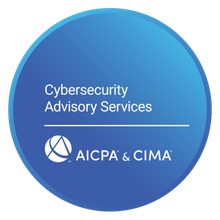Welcome to Cybersecurity in 2024: A Guide for Tax Professionals
The digital world is always on the move, and so are the cyber threats that lurk within it. For tax professionals, the mission is clear and more important than ever: Protecting taxpayer information is your top priority.
Why It Matters Now
As we navigate through 2024, sticking to the IRS and FTC cybersecurity guidelines isn't just good practice—it's essential. The stakes have never been higher with cyber threats becoming more cunning by the day.
The Rulebook: GLBA & IRS Guidelines
Imagine the Gramm-Leach-Bliley Act (GLBA) and various IRS publications as your cybersecurity bible. These regulations offer a robust framework designed to shield financial data from unauthorized eyes and prevent breaches that are growing only more complex.
Beyond Lock and Key
Gone are the days when locking away files was enough. The IRS and FTC have sketched out what might be best described as a blueprint for a fortress, ensuring that the information you hold dear is secured.
Your Personal Guide to Clarity
Consider this article your personal compass through the maze of guidelines. We're here to break down these regulations into clear, actionable steps. It's not just about ticking off compliance checkboxes—it's about excelling in data protection.
A Commitment to Privacy and Trust
By embracing these practices, you're doing more than just following rules. You're standing up for your clients' rights, laying down the foundation of trust that's critical in our digital era. Ready to make your cybersecurity practices ironclad and your commitment unwavering?
Let's Dive In Together
Join us on this path to mastering cybersecurity. It's time to ensure your practices aren't just compliant but are built to withstand whatever comes next. Here's to making your professional journey both secure and successful.
Stepping Up to the Challenge: Cybersecurity for Tax Professionals
In the face of relentless cyber threats, tax professionals play a crucial role in defending the financial frontier. The IRS and FTC have laid out a series of guidelines to navigate this complex landscape, ensuring taxpayer data remains secure and confidential.
The Cornerstone of Compliance: The Gramm-Leach-Bliley Act (GLBA)
At the heart of these cybersecurity guidelines is the GLBA. This act mandates that professionals handling taxpayer information develop and enforce a robust information security plan. Such a plan isn't just a bureaucratic requirement—it's your shield against cyber incursions.
A Blueprint for Security: Key Measures and Best Practices
-
Recognize and React to Phishing Scams: Phishing remains a prevalent threat. Training to spot and avoid these scams is critical. Remember, vigilance is your first line of defense.
-
Strong Passwords and Multi-Factor Authentication: Strengthen your digital gates. Use complex passwords and, wherever possible, enable multi-factor authentication to add an extra layer of security.
-
Secure Your Networks: Wireless networks are convenient but can be vulnerable. Implementing WPA-3 security and changing default settings are essential steps to prevent unauthorized access.
-
Protect Client Data: Encryption and regular backups can save the day. Always be prepared for the worst-case scenario—a data breach.
-
Stay Informed and Prepared: Cyber threats evolve rapidly. Keeping your software updated and staying informed about new threats are non-negotiable aspects of your security strategy.
Reporting and Recovery: What to Do in the Event of a Data Breach
Should the worst happen, it's essential to know how to respond. Immediate reporting to the IRS and taking steps to mitigate the damage can help protect your clients and your reputation.
-
Report Immediately: Notify the IRS and, if necessary, law enforcement. Quick action can help prevent further damage.
-
Engage Experts: Consider hiring security professionals to assess and repair the breach. This can also help in preventing future incidents.
-
Review and Strengthen: Use the incident as an opportunity to review and strengthen your security measures. Learning from the breach can help you fortify your defenses.
Your Role in the Digital Age
Embracing these practices means more than meeting legal requirements; it signifies your commitment to safeguarding your clients' trust and their sensitive information. In a world where data breaches are a matter of "when" rather than "if," your role as a cybersecurity sentinel has never been more crucial. Let's navigate this digital age with confidence, knowing we're doing everything we can to protect those we serve.
Navigating FTC Cybersecurity Regulations
In an era where data breaches are not a matter of if but when, understanding and complying with FTC cybersecurity regulations is paramount for tax professionals.
What is the FTC Safeguards Rule?
Under the Gramm-Leach-Bliley Act (GLBA), the Safeguards Rule requires financial institutions to protect consumer information. This includes anyone who prepares taxes, offering a blueprint for safeguarding client data.
Key Steps for Compliance
Designate a Safeguards Coordinator
- Action Required: Assign responsible individuals to oversee your cybersecurity program.
Conduct a Risk Assessment
- Critical Evaluation: Identify potential risks to client information in all operational areas.
Develop and Implement a Safeguards Program
- Proactive Measures: Tailor security practices to the size and complexity of your operations.
Ensure Third-Party Service Providers Uphold Safeguards
- Due Diligence: Verify that your vendors maintain the integrity of your security standards.
Regularly Review and Update Your Security Program
- Continuous Improvement: Adapt your security measures in response to new threats or changes in your business.
Embrace the Rule, Protect Your Clients
Compliance with the FTC Safeguards Rule is more than a regulatory checkbox. It's an ongoing commitment to the privacy and security of your clients' sensitive information. Implementing these guidelines solidifies the trust your clients place in you, marking your practice as not only competent but also deeply committed to their protection.
Protect Your Clients; Protect Yourself
Stay Informed and Prepared: Keeping abreast of the latest phishing techniques and familiarizing yourself with the IRS Publication 4557, "Safeguarding Taxpayer Data," is crucial. Implement a written information security plan that encompasses IRS guidelines and the foundational principles outlined in NISTIR 7621r1.
-
Phishing Awareness: Train yourself and your staff to identify phishing emails, especially those masquerading as communications from trusted sources like the IRS, tax software providers, or clients. Avoid clicking on suspicious links or opening attachments from unknown senders.
-
Robust Anti-malware Protection: Install comprehensive anti-malware and anti-virus solutions on all your devices, ensuring automatic updates to combat the latest threats.
-
Password Protocols: Embrace strong, complex passwords and change them regularly. Consider using a password manager for enhanced security.
-
Data Encryption: Encrypt sensitive files and emails to shield your client's information from unauthorized access.
-
Backup Strategies: Regularly back up data to secure, external sources that are not constantly connected to your network, safeguarding against ransomware attacks.
-
Physical Device Security: Dispose of old hardware securely to prevent data breaches from discarded devices.
-
Access Control: Restrict data access to only those who need it for their specific job functions.
-
Vigilance with E-Filing: Regularly review your e-file applications and deactivate any that are no longer in use to prevent misuse.
Use Security Software
Leveraging the right security software is fundamental. Ensure your systems are equipped with:
-
Anti-virus and Anti-spyware: To block malicious software and unauthorized data theft.
-
Firewalls: To prevent unauthorized access.
-
Drive Encryption: To secure data on mobile devices in case of loss or theft.
Choosing reputable security software and keeping it updated is essential for safeguarding your digital environment.
Create Strong Passwords
Strong, unique passwords are your first line of defense:
-
Complexity and Variety: Use a mix of letters, numbers, and symbols. Avoid common passwords and personal information.
-
Password Managers: Consider using a password manager to securely store your complex passwords.
-
Multi-factor Authentication (MFA): Enable MFA wherever possible to add an extra layer of security, significantly reducing the risk of unauthorized access.
Secure Wireless Networks
Protect your wireless networks diligently:
-
Strong Passwords for Routers: Change the default passwords to something robust and unique.
-
Reduce Signal Range: Adjust your router settings to minimize the risk of outside access.
-
Wi-Fi Security Protocols: Utilize the most advanced security protocol available, like WPA3.
-
Avoid Public Wi-Fi: Never access sensitive information or conduct business over unsecured, public Wi-Fi networks.
Adhering to these guidelines not only helps in complying with regulatory requirements but also builds a fortress around the sensitive taxpayer data you're entrusted with. It's about making security a cornerstone of your practice, ensuring both compliance and client trust.
Responding to a Data Breach: A Tax Professional's Guide
Facing a data breach can be daunting, but with a clear action plan, you can mitigate the damage and maintain your clients' trust. This section draws from the FTC's "Data Breach Response: A Guide for Business" to outline crucial steps tax professionals should take when dealing with a data breach.
Immediate Actions
Secure Your Operations: Quick action is vital. Secure any breached areas, change passwords, and assess the extent of the breach with your IT team or a hired forensic team. This initial step is critical in preventing further data loss.
- Mobilize Your Breach Response Team: This should include members from IT, legal, communications, and upper management.
Assessing the Breach
Understand the Breach: Work with forensic experts to understand how the breach occurred and which information was compromised. This understanding will shape your response and help prevent future breaches.
- Legal Consultation: Discuss with legal counsel to understand your obligations under state and federal laws, including notification requirements.
Communication is Key
Notify Affected Parties: This includes individuals whose information has been compromised, law enforcement, and possibly regulatory bodies. The way you communicate this information can greatly impact your firm's reputation post-breach.
- Transparent and Direct Communication: Offer clear, concise information about what occurred, what information was affected, how you're responding, and what steps individuals can take to protect themselves.
Post-Breach Steps
Prevent Future Breaches: Implement stronger security measures based on the breach analysis. This could involve more sophisticated cybersecurity tools, updated policies, and employee training on new protocols.
-
Offer Support: Consider providing affected individuals with credit monitoring services to help protect them from identity theft.
-
Continuous Monitoring: Keep an eye on your systems for any unusual activity to catch potential future breaches early.
Building Back Better
Review and Revise Your Security Policies: Use the breach as a learning opportunity to strengthen your defenses. Regularly update your security protocols and practices in line with evolving cyber threats.
Maintain Open Lines of Communication: Keep your clients informed about the steps you're taking to improve security. Building trust is crucial in the aftermath of a breach.
Responding effectively to a data breach is about more than just damage control; it's an opportunity to reinforce your commitment to security and client trust. By taking these steps, you can navigate the aftermath of a breach with confidence and integrity.
Navigating the Future with Care
As we conclude our journey through cybersecurity compliance for tax professionals, it's crucial to recognize the dynamic nature of the cybersecurity landscape and the regulations that govern it. The amended Safeguards Rule, as highlighted, marks a significant shift from a principle-based approach that has served well for over two decades, offering financial institutions the flexibility to adapt their security measures to fit their unique needs.
Embracing Change with Caution
The FTC emphasizes the importance of regular rule review to align with the evolving environment. However, this process, while necessary, comes with its challenges. New rules can introduce far-reaching impacts, often unforeseen, affecting the very fabric of how financial institutions operate and protect consumer data.
A Balanced Approach to Security
The transition to the amended Safeguards Rule raises valid concerns about increased costs and potential risks associated with stricter regulatory mandates. This underscores the need for a balanced approach, one that considers the practical realities of implementing new security safeguards against the backdrop of existing practices that have proven effective.
Looking Ahead
For tax professionals, this evolving regulatory landscape underscores the importance of staying informed and prepared. While compliance remains non-negotiable, navigating these changes with a critical eye toward both security and operational feasibility will be key. As we move forward, let's commit to a future where cybersecurity measures are not only compliant but also practical and adaptable to the changing threats and needs of our profession.
A Partnership in Compliance
Together, as tax professionals and stewards of sensitive financial data, our role extends beyond mere compliance. It's about building a culture of cybersecurity that prioritizes the protection of our clients' information as much as their trust. By carefully considering the implications of new regulations and adopting a proactive stance on security, we can navigate these changes successfully and continue to serve our clients with integrity and assurance.






